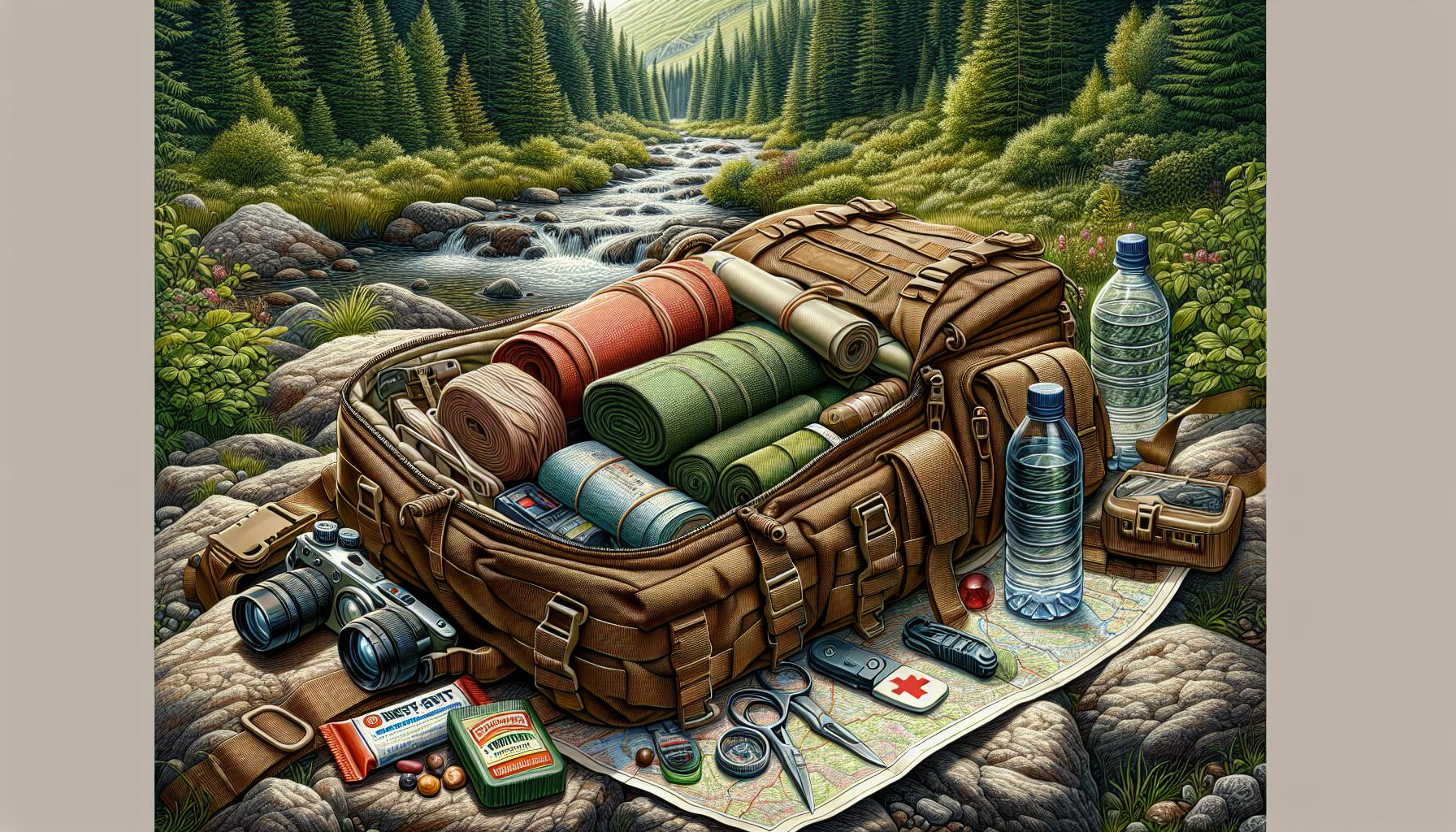Introduction to Survival Towels
Survival towels are an essential item that every prepper should have in their bug out bag or survival kit. Unlike regular cotton towels, survival towels are highly absorbent, fast-drying towels made from specialized synthetic fabrics such as microfiber or rayon. These tightly woven fabrics can hold up to 4 times their weight in water, making them extremely useful for emergency situations. Many survival towels also have an antibacterial treatment to inhibit the growth of germs and bacteria.
Survival towels come in a range of sizes, from pocket-sized packs to large beach towel dimensions. Their versatility, durability, and absorbency make them invaluable for improvising first aid dressings, shelter, fire starting, signaling, and more. Top prepper brands like WeLovePrepping offer high-quality survival towels made with ripstop fabrics that can withstand repeated use even in harsh conditions.
Key Features of Survival Towels
Survival towels have several advantageous properties that make them far better than regular towels for emergency preparedness:
Extreme Absorbency
The tightly woven synthetic fibers in survival towels can soak up 4 times their weight in water. This allows them to quickly absorb moisture, preventing hypothermia if used to dry off. The tight weave also makes it easy to wring out excess water after use. This extreme absorbency makes survival towels perfect for first aid, cleaning, hygiene, and drying in emergency situations.
Antibacterial Properties
Many survival towels are treated with an antibacterial coating that reduces bacterial growth even when damp. This prevents illness when the towels are used for first aid on wounds or for general hygiene. The antimicrobial properties make survival towels much safer for cleaning hands and injuries compared to regular cotton towels, which can harbor bacteria. The coating also helps purify questionable water by removing some bacteria when used for filtration.
Durability
Survival towels are constructed from ripstop fabrics like polyester that resist tearing or fraying even after repeated use. Unlike regular cotton towels, they do not degrade over time in harsh conditions. The rugged fabric allows survival towels to stand up to being used improvise items like a sling, tourniquet, or shelter when resources are limited.
Compact Size
Survival towels pack down small enough to fit conveniently in any bug out bag or survival kit. They come in pocket-size for portability, but are also available as larger beach towel sizes. The synthetic fabric makes survival towels lightweight, often weighing just a few ounces. This makes it easy to stash several towels in a backpack without taking up much precious space.
Top Uses of Survival Towels
The impressive absorbency, antibacterial properties, durability and portable size of survival towels make them ideal for:
First Aid
Survival towels can quickly stop bleeding from wounds by applying direct pressure. Their antibacterial properties also help prevent infection in cuts or scrapes when used for first aid. The towels can be used to improvise slings, tourniquets, bandages, and other medical supplies when resources are scarce. Soaking the towel in cool water can also help reduce fevers or overheating.
Hygiene
Washing the face, hands, and body with a survival towel helps maintain health and hygiene to prevent illness and infection. The antimicrobial coating kills germs and bacteria that often cause disease in unsanitary conditions. The compact size takes up little room in a bug out bag while still providing a way to get clean. The quick drying synthetic fabric avoids chafing or discomfort from wet rags.
Water Filtration
Survival towels can be used to remove sediment, debris, and even some bacteria from found water sources in the wilderness. Simply allow the water to pass through the layers of the towel into a clean container. Squeeze out the towel to filter out particulates and impurities. This is an effective way to purify questionable water when lacking other supplies.
Fire Starting
The fuzzy side of survival towels is excellent tinder to capture a spark and ignite a fire. The fibers fluff up easily when dry to catch flames quickly without any preparation. The lint and fibers ignite much faster and more reliably than trying to use natural materials for tinder.
Shelter Building
The lightweight but waterproof fabric of a survival towel can be used as an improvised tarp or tent for shelter. Wrapping a towel around the body also helps retain warmth by trapping radiant body heat close to the skin. Placing a towel on the ground underneath you prevents dampness and heat loss. A towel can also be tied between trees or sticks to create overhead cover from rain or snow.
Signaling
The bright colors of survival towels stand out sharply against the natural backdrop and foliage. This makes them ideal for waving or hanging to attract the attention of rescuers when lost or injured. A towel attached to a stick also makes an excellent distress flag when trying to signal for help.
Key Considerations When Buying
Those building out their survival kit should keep the following factors in mind when selecting survival towels:
Absorbency
Look at the product specifications to compare how much water it can absorb relative to its dry weight. The most useful towels will absorb at least 4 times their weight.
Size
Consider if you need a pocket-sized towel for portability or a large beach towel for shelter or group use. Pick the size based on your intended purpose.
Material
Synthetic fabrics like microfiber or rayon dry much faster than towels made from natural cotton. Look for these quick-drying fabrics.
Antibacterial Treatment
Check if the towel has been treated with a coating that makes it antimicrobial. This is a key feature for first aid and water filtration uses.
Color
Brighter colors are better for signaling and visibility. But neutral colors may be preferred for camouflage.
Price
Factor in quality, features, brand reputation, and quantity when comparing prices between survival towel brands and models.
Top Brands
Some of the top manufacturers known for high-quality survival towels include:
-
WeLovePrepping - Highly rated for durability and offers a full range of sizes.
-
Vapur - Renowned for their antimicrobial, odor-resistant towel technology.
-
Miracle Towel - Known for unbeatable absorbency and rapid drying time.
-
Arcturus - Affordable military-grade tactical towels at a budget price point.
-
Wise Owl Outfitters - Reliable camping and outdoor recreation towels.
Key Features to Look For
The best survival towels will possess traits like:
-
4x or greater absorbency of their dry weight.
-
Antimicrobial treatment to resist bacteria growth when wet.
-
Tear-resistant ripstop fabric that won't fray with repeated use.
-
Extremely lightweight and highly packable.
-
High-visibility colors for signaling and being located.
Pricing
Pricing often depends on size, materials, and ordering quantity:
-
Pocket-size survival towels - $5 to $15 each
-
Medium camping towel size - $15 to $30
-
Large beach towels - $30 to $50
-
Bulk packs will save money per towel compared to singles
Match your towel size and quantity to your specific needs and budget.
Care and Maintenance
To extend the longevity of your survival towels follow these care tips:
-
Wash in cold water to preserve the antimicrobial treatment. Hot water will degrade it faster.
-
Hang dry or tumble dry on low to prevent damage to the synthetic fabric.
-
Store compressed and away from moisture or mildew may form.
-
Avoid using bleach, fabric softener, or dryer sheets as these can affect absorbency.
-
Check periodically for small holes and repair immediately to prevent further damage.
Improvising a Survival Towel
If lacking a purpose-made survival towel, it's possible to improvise one from other materials:
-
Cut up cotton t-shirts into strips and tie together for a makeshift towel.
-
Use any clean fabric like bandanas, rags, shorts, blankets, etc.
-
Line a jacket or bag with absorbent grass, leaves, or moss.
-
Bird and animal nests make excellent natural fiber tinder.
-
Wrap fir bough tips in cloth to absorb water and filter particulates.
While improvised, these alternatives won't be as absorbent or durable as a true microfiber survival towel. But they can still be employed in an emergency when no other supplies are available.
Conclusion
Having a quality survival towel is a wise addition to any emergency preparedness kit. Their impressive absorbency, antibacterial properties, and durability make them useful for everything from first aid to fire starting. When selecting a survival towel, carefully evaluate factors like the fabric, antimicrobial treatment, size, color, and brand reputation. Investing in a towel from a top manufacturer like WeLovePrepping will provide essential utility whether facing a wilderness emergency or disaster aftermath. With proper care, a survival towel can serve your preparedness needs for years to come.


